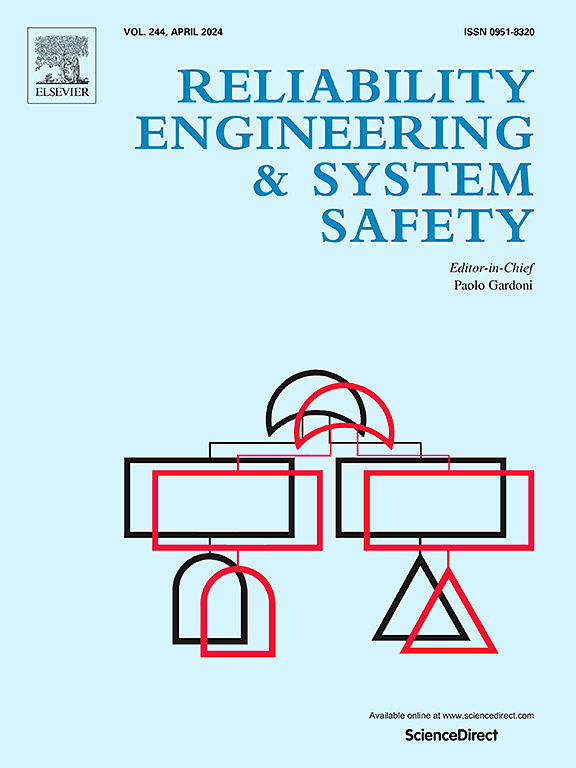基于视觉变换的钢筋混凝土桥墩震害状态预测方法:数据库开发与有效评估
IF 9.4
1区 工程技术
Q1 ENGINEERING, INDUSTRIAL
引用次数: 0
摘要
桥梁的结构安全,特别是钢筋混凝土桥墩在地震作用下的损伤状态预测能力,已成为结构工程中的一个关键问题。本研究采用深度学习技术对RC桥墩在地震作用下的损伤状态进行有效预测和评估。为了支持模型训练,使用Latin Hypercube Sampling生成了100个桥墩的参数样本集,从而开发了一个综合的地震响应数据库,其中包含15个定义的损伤状态的66,000个样本。这些数据库考虑了地震固有的随机性、复杂的破坏模式和随时间变化的综合评价指标。提出了一种基于Vision Transformer架构的新型深度学习框架CC-ViT。该框架集成了连续小波变换、上下文锚定注意和DropKey技术,以增强特征提取和模型泛化。在监督学习环境中训练和评估多个模型。对比分析表明,CC-ViT达到了85%的最高测试精度。基于grad - cam的可解释性分析进一步证实,CC-ViT有效地捕获了地震反应谱中的关键区域,为知情且可解释的决策提供了支持。为了便于实际实施,开发了端到端交互软件工具,用于有效预测桥墩损伤状态。研究结果为数据驱动的决策提供了宝贵的见解,旨在加强智慧城市的基础设施安全和维护。本文章由计算机程序翻译,如有差异,请以英文原文为准。
A vision transformer-based method for predicting seismic damage states of RC piers: Database development and efficient assessment
The structural safety of bridges, particularly the ability to predict the damage states of reinforced concrete (RC) piers under seismic action, has become a critical issue in structural engineering. This study employs deep learning techniques to enable efficient prediction and assessment of damage states in-service RC bridge piers subjected to seismic events. To support model training, a parametric sample set of 100 bridge piers is generated using Latin Hypercube Sampling, leading to the development of a comprehensive seismic response database containing 66,000 samples across 15 defined damage states. These databases account for inherent seismic randomness, complex failure modes, and time-dependent composite evaluation indicators. A novel deep learning framework, CC-ViT, based on the Vision Transformer architecture, is proposed. This framework integrates Continuous Wavelet Transform, Context Anchored Attention, and DropKey techniques to enhance feature extraction and model generalization. Multiple models are trained and evaluated in a supervised learning setting. Comparative analysis reveals that CC-ViT achieved the highest test accuracy at 85 %. Grad-CAM-based interpretability analysis further confirms that CC-ViT effectively captures critical regions in the seismic response spectrum, supporting informed and explainable decision-making. To facilitate practical implementation, an end-to-end interactive software tool has been developed for efficient prediction of pier damage states. The findings contribute valuable insights for data-driven decision-making aimed at enhancing infrastructure safety and maintenance in smart cities.
求助全文
通过发布文献求助,成功后即可免费获取论文全文。
去求助
来源期刊

Reliability Engineering & System Safety
管理科学-工程:工业
CiteScore
15.20
自引率
39.50%
发文量
621
审稿时长
67 days
期刊介绍:
Elsevier publishes Reliability Engineering & System Safety in association with the European Safety and Reliability Association and the Safety Engineering and Risk Analysis Division. The international journal is devoted to developing and applying methods to enhance the safety and reliability of complex technological systems, like nuclear power plants, chemical plants, hazardous waste facilities, space systems, offshore and maritime systems, transportation systems, constructed infrastructure, and manufacturing plants. The journal normally publishes only articles that involve the analysis of substantive problems related to the reliability of complex systems or present techniques and/or theoretical results that have a discernable relationship to the solution of such problems. An important aim is to balance academic material and practical applications.
 求助内容:
求助内容: 应助结果提醒方式:
应助结果提醒方式:


